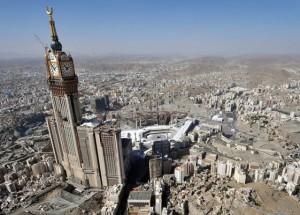By Tim Catts www.bloomberg.com
Otis Elevator Co.’s quest to carry people up skyscrapers twice as tall as the Empire State Building hearkens back to a pivotal innovation by its founder: ensuring that riders won’t plummet back to earth if something goes awry.

The United Technologies Corp. (UTX) unit has to go beyond the braking mechanism Elisha Otis demonstrated with a rope and saber at the 1854 World’s Fair. It’s working on systems able to stop 16 metric tons (35,274 pounds) of elevator and cable falling from the top of a kilometer-tall tower — equal to a half-full tractor trailer driven off a cliff.
With high-rises in China and Saudi Arabia poised to surpass Dubai’s record 2,717-foot (828-meter) Burj Khalifa, the race to outfit the next generation of super-tall buildings is spurring engineering leaps at Otis, Kone Oyj (KNEBV) and their elevator-making competitors in a market valued at $66 billion in 2010.
“We’re reinvesting in the skyscraper because the buildings on the drawing board right now are just different,” President Pedro Baranda said in an interview at Otis’s headquarters in Farmington, Connecticut. “Understanding the elevatoring of a very high-rise building can often give you insights into what you can do better at the lower end.”
Skyscraper construction is rebounding as the global economy regains its footing after the worst slump since the Great Depression. As many as 24 skyscrapers approaching 1,000 feet may be completed in 2013, compared with nine in 2012, according to the Council on Tall Buildings and Urban Habitat, and a new round of even loftier structures is on the drawing board.
One Kilometer
They include Sky City, a 2,750-foot mixed-use high-rise in Changsha, China, whose builder says it would use prefabricated panels to cut construction time to 90 days, and Kingdom Tower, a proposed kilometer-high skyscraper in Jeddah, Saudi Arabia, that would soar at least 20 percent higher than Burj Khalifa.
Elevators used in smaller structures aren’t up to the task of moving people that high. Engineers are responding by double- decking cars to serve two floors at once and coordinating elevator traffic with computers, council Chairman Antony Wood said.
“Advances in elevators in the past 20 years are probably the greatest advances we’ve seen in tall buildings,” Wood said in a telephone interview from Chicago.
The recovery in skyscraper demand is good news for companies such as Otis. Cleveland-based researcher Freedonia Group estimates the global elevator market will grow 6.4 percent annually to $90 billion for five years ended in 2015. More info












